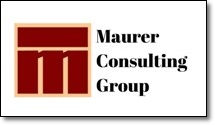‘Designing Strategies’ newsletter
March – April 2005 Volume 2 – Issue 4
 Where are the jobs and economic growth going to be over the next ten years? The Hudson Institute identified these as the ‘hot’ fields: medical & healthcare related industries, information technology, security, and environmental sciences. When we step back and think about it, these are very clear and logical responses to outside influences impacting our lives and businesses. It is these influences that determine where all the jobs will be over the next ten years.
Where are the jobs and economic growth going to be over the next ten years? The Hudson Institute identified these as the ‘hot’ fields: medical & healthcare related industries, information technology, security, and environmental sciences. When we step back and think about it, these are very clear and logical responses to outside influences impacting our lives and businesses. It is these influences that determine where all the jobs will be over the next ten years.
Medical and health care related industries are growing as our population ages and moves toward retirement. Information technology continues to be a growth industry. Since the 9/11 tragedies, train bombings in Spain and continued threats of terrorism, homeland and personal security are on the minds of everyone. Likewise, the growing concern and attention to our environment, global warming and energy conservation will certainly bolster those segments of the economy.
How do you, or can you and your business fit into these categories of strong growth? How can you capitalize on opportunities in these markets? Can you change your product or services mix to include these hot areas of growth? Are there threats to your success because you are not focused on the environments surrounding us – and our business? It pays to be aware of coming changes so you can prepare to deal with them strategically.
Visualize – Analyze – Strategize
Plan for continued success!
Editor’s note: Error in last issue referred to our first Hispanic member of the Supreme Court. Should have been first Hispanic Federal Attorney General.
 Have you heard the news? Phoenix and Denver, both growth regions, identified a critical shortage of workers in skilled trades as veteran workers approach retirement. Education continues to be the great equalizer in our country. There’s going to be a colossal shortage of workers in the next 10 years. I can hear your response now: “That’s news?!” Anyone who hasn’t heard this forecast must have been living in a cave or on a remote, desert island. Are you feeling the pinch at your company yet? If you aren’t now, you will be soon, so this is the time to start planning for this bump in the road to your company’s success.
Have you heard the news? Phoenix and Denver, both growth regions, identified a critical shortage of workers in skilled trades as veteran workers approach retirement. Education continues to be the great equalizer in our country. There’s going to be a colossal shortage of workers in the next 10 years. I can hear your response now: “That’s news?!” Anyone who hasn’t heard this forecast must have been living in a cave or on a remote, desert island. Are you feeling the pinch at your company yet? If you aren’t now, you will be soon, so this is the time to start planning for this bump in the road to your company’s success.
The Hudson Institute, a non-profit research organization, estimates that there will be a shortage of 6.2 million workers by 2008. By 2015 they estimate there will be a shortage of 40 million workers. Those are significant numbers that cannot be ignored by anyone focused on continued success and growth. One of the greatest bodies of research currently being done across the country is assessing what this situation will mean to local economies.
What Areas Will Need Large Number of Candidates to Fill Job Openings?
Phoenix and Denver, both growth regions, identified a critical shortage of workers in skilled trades as veteran workers approach retirement. Young workers are not following in their footsteps to pick up this physically demanding work. The construction field is already experiencing a decrease workers. Still needed, but less available, are carpenters, laborers, electricians and pipe fitters. This workforce shift will have a major impact on the design industry. These are the people who build the homes, office buildings, hospitals, hotels and restaurants and other structures that utilize finish materials, furniture and equipment that so many of you produce or install.
Don’t think this is a problem being faced only by the construction industry. Studies by the National Association of Manufacturers (NAM) show a real and growing threat to our country’s ability to compete in global markets. Why? Because our workforce is experiencing a lack of skilled manufacturing employees. That ‘Greatest Generation’ of workers came home from World War II. They became the skilled manufacturing workers upon which our economy flourished. The younger generations, our children’s, and ours, have been steadily pushed toward college. Fewer are now available to fill skilled and unskilled jobs in manufacturing.
New Jobs Will Require New Kinds of Education
We hear about manufacturing jobs being sent to other countries, and while this is true, it isn’t the entire story. Yes, lower level, non-skilled, assembly line jobs are going where they can be accomplished cheaper to keep our products competitive in a world market. But, the more skilled, high tech jobs in manufacturing still remain here and pay well. Senior level workers can reach salaries in the $50,000 – $60,000.00 range plus benefit packages.
 The skilled, high tech manufacturing worker will be one who can think on his feet and solve problems, not just assemble widgets. They will possess computer skills that train them to assess machinery and robotics. Are these the workers that you need to begin cultivating? How can you deal now with the uncertainty that these worker shortages will bring to your own company? There is much to be said for getting and keeping good workers.
The skilled, high tech manufacturing worker will be one who can think on his feet and solve problems, not just assemble widgets. They will possess computer skills that train them to assess machinery and robotics. Are these the workers that you need to begin cultivating? How can you deal now with the uncertainty that these worker shortages will bring to your own company? There is much to be said for getting and keeping good workers.
Education continues to be the great equalizer in our country. Make contact and work with your local high schools, technical schools and community colleges to produce the kinds of workers you will need. Partnerships are in place between local governments and industry groups and between businesses and schools to promote manufacturing as a career. If there aren’t programs in your area, get involved and start one. Talk to business and civic leaders about setting up training centers to create the kinds of workers you will need. Set up training centers of your own. What can you do now to avoid that bump in the road? A worker shortage is definitely coming our way.
“The best way to predict the future is to invent it.”
Alan Kay, the genius that envisioned laptop computers






